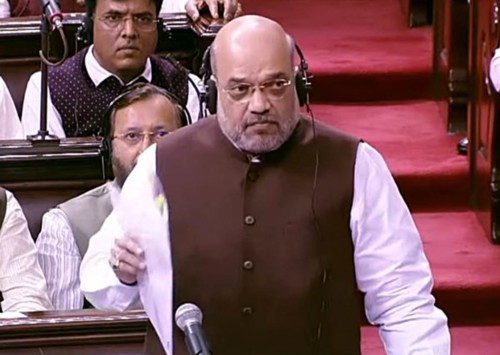Exodus of Kashmiri pandits
In the year 1990, Kashmiri pandits had witnessed a hysterical, macabre night in the form of blaring threats and slogans, asking them to either convert to Islam or face death. Most of them fled their home for centuries to find shelter as refugees in other parts of India.
The recent trailer of Shikara, a film about Kashmiri pandits, has brought the focus back on the plight of thousands of Kashmiri Hindus who were forced to flee their homes in face of persecution and threats. Shikara: A love letter from Kashmir is the debut film of actors Aadil Khan and Sadia. Directed by Vidhu Vinod Chopra, this movie tells the story of 400,000 Kashmiri pandits who fled the valley during a mass exodus in the year 1990 when militancy in Kashmir began to take threatening proportions. The trailer shows a young couple sitting inside their home when from the window, they see a house burning. The film talks of how Kashmiri pandits were forced to leave their homeland to lead the life of refugees in their own country. Shikara is touted as a story of resilience. The filmmakers say that it is also a story of love that remains unextinguished through 30 years of exile. A timeless love story in the worst of times. Rahul Pandita, the author of the book Our Moon had blood clots: The exodus of Kashmiri pandits has turned into a screenwriter for the movie Shikara. Though inspired by the book, the movie will not be entirely adapted by the book. The movie-makers have taken a different route where they showcase a love story to portray the tragedy faced by the people in the valley 30 years ago.
Interestingly, Shikara: a love letter from Kashmir comes only a few months after the abrogation of Article 370, which gave special status to Jammu and Kashmir as well as the bifurcation of the former state into two federally-governed territories- Jammu & Kashmir and Ladakh.
Ralive tsalivyagaliv
January 1990, the Kashmiri pandits woke up to their worst nightmare. The Islamic militants that had seized control of many mosques had used the loudspeakers in the crowded streets and town squares with just one message- ralive tsalivyagaliv (convert to Islam, leave the land, or die). These threats, followed up with violent acts such as burning down homes and businesses of the Kashmiri Hindus and even killing many of them, tore apart the centuries-old harmony between majority Muslim and tiny but influential Hindu community. Muslim militant groups targeted Hindus by killing their men, burning their homes and destroying their temples. Militants would continuously use the mosques to make calls to the Hindus to leave the valley.
Over the following weeks, chaos reigned supreme in the entire Kashmir valley as masked men ran amok, waving their guns, shooting to kill and shouting anti-India slogans. It seemed that the government headed by the then chief minister Farooq Abdullah and his National Conference party had abdicated all responsibilities, allowing the militants to threaten the Hindus and run riot all over the state. A terrifying fear psychosis began to take a grip on Kashmiri pandits. Tens of thousands of Kashmiri pandits took the painful decision to flee to save their lives, marking one of the biggest exodus in the 20th-century.
To mark the exodus of Kashmiri pundits from Kashmir, the Global Kashmiri Pandits Diaspora (GKPD) organised a worldwide commemoration on January 19 with a series of events in India, America, UK, Canada and several other countries. According to them, the circumstances that forced out the entire minority of Kashmiri pandits/Hindus from their homeland are akin to genocide, as has been reported by National Human Rights Commission of India and now being recognised worldwide. The GKDP says that even 30 years on, they still await justice. Events were also organised in Jagati camp in Jammu, where thousands of Kashmiri pandits continue to live three decades on. Similar events were held in Mumbai, Delhi, and Kolkata. Overseas, the Indian Americans of Kashmir (IAFK)organised large-scale events in New Jersey and Illinois. In Canada, a symposium was held in Toronto, in collaboration with Indo-Canadian Kashmir Forum. In the UK, events were held in London, Manchester, Oxford, Glasgow, Nuneaton and Walsall.
The Kashmiri Hindus say that even though a lot has changed in India since 1990 and several governments have come and gone, yet the plight of Kashmiri pandits remains unchanged as the half-million strong community remains unable to get back to its homeland and continue to live on as refugees. They say that the film comes at a critical time when the valley and the people living in it go through another wave of change. Despite the violent history, the people who used to call Kashmir their home still remember it with fond memories and a hope to someday go back. They describe Kashmir, exactly as centuries ago Persian poet Amir Khusrau had described: gar firdaus bar-rue zaminast, hamiasto, haminasto, haminast (If there’s heaven on earth, it’s here, it’s here, and it’s here).













